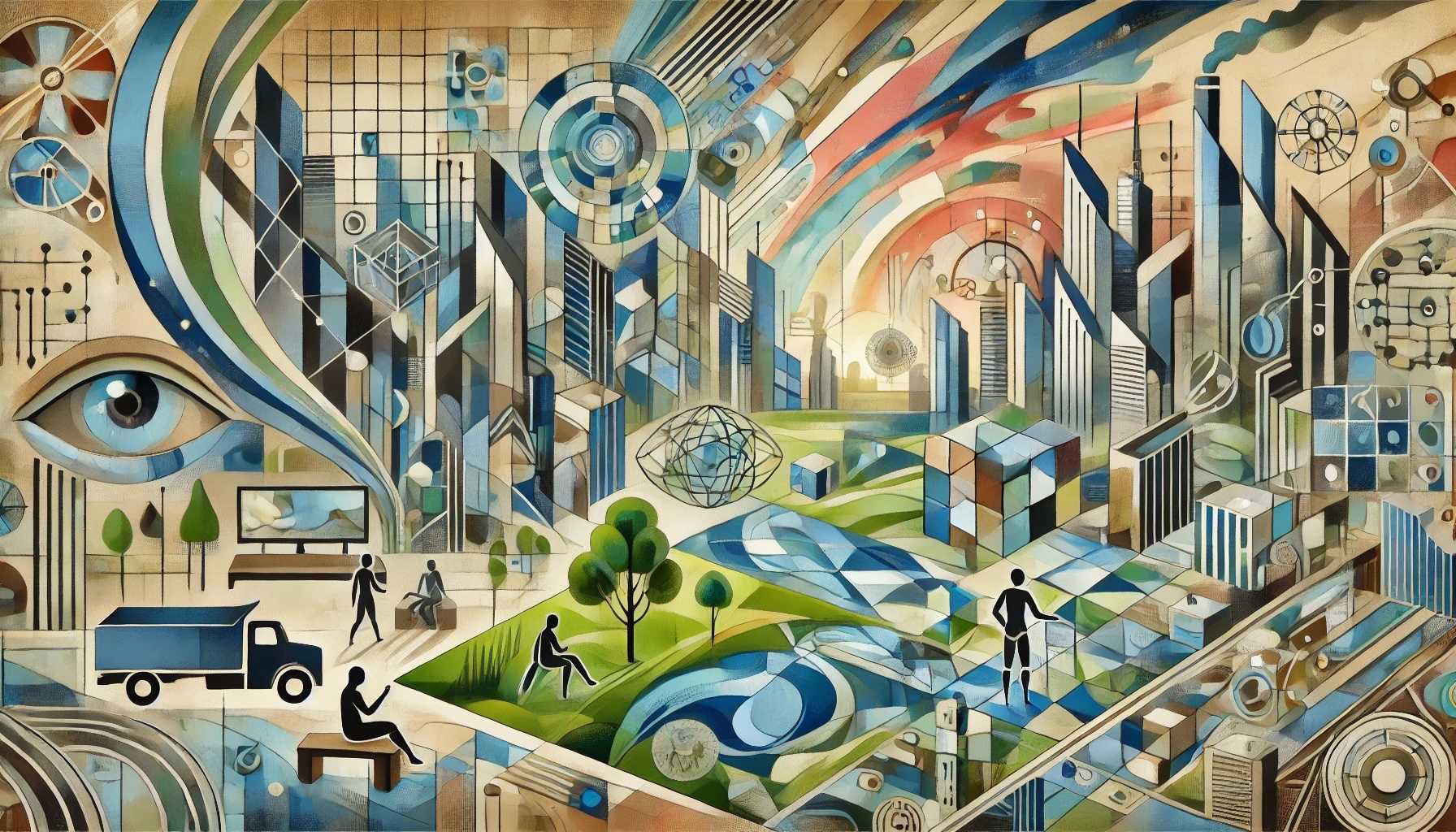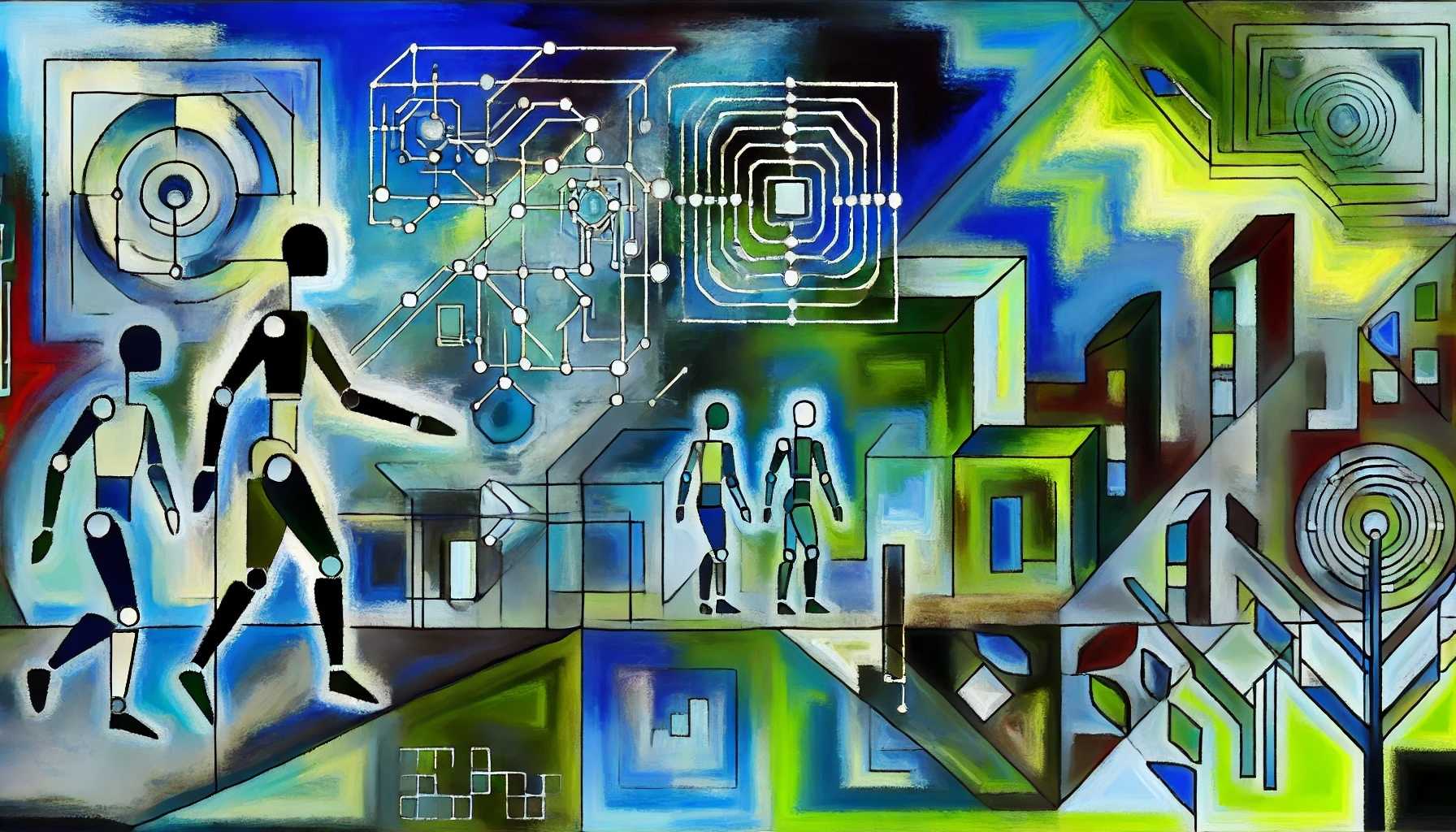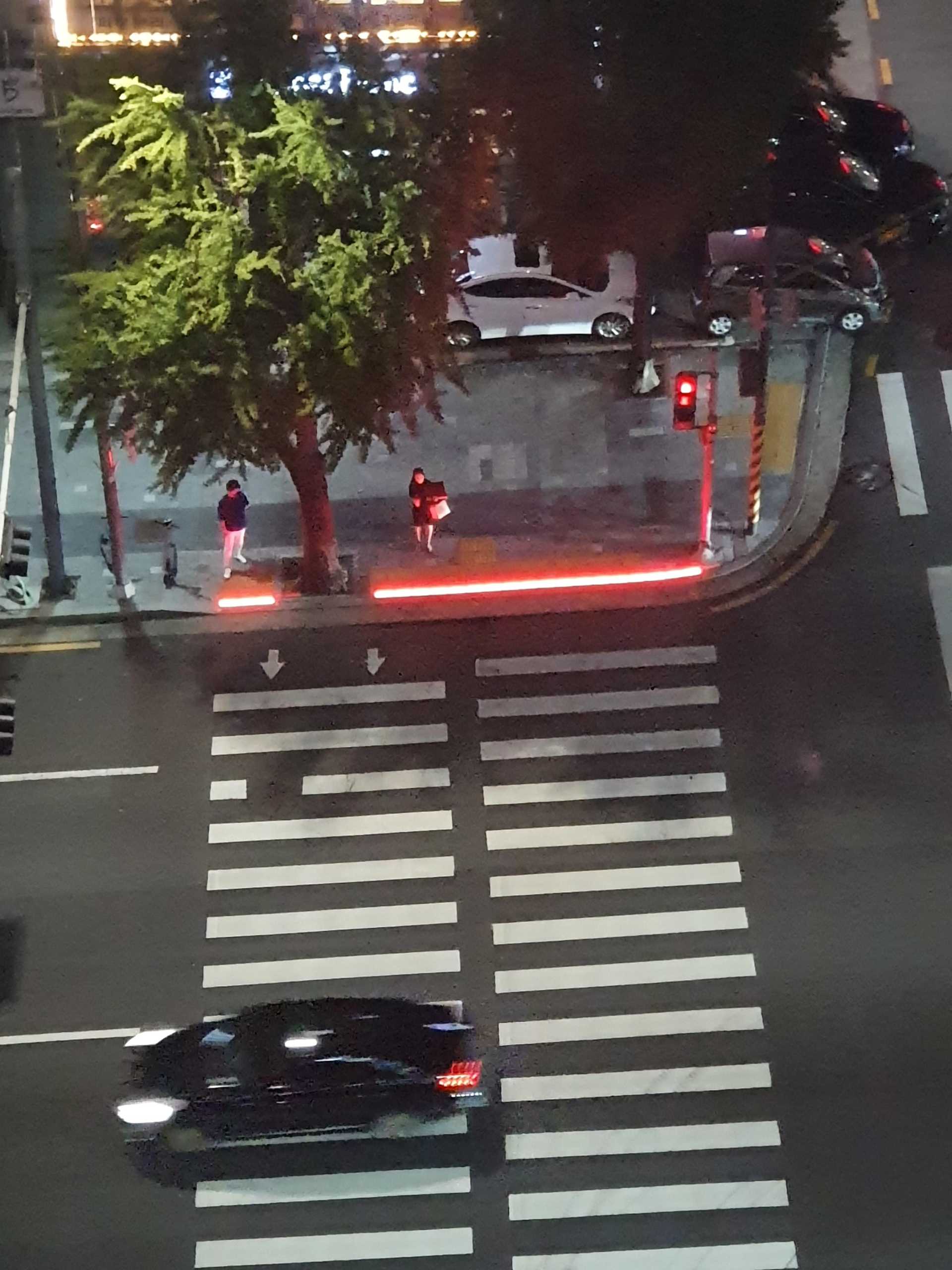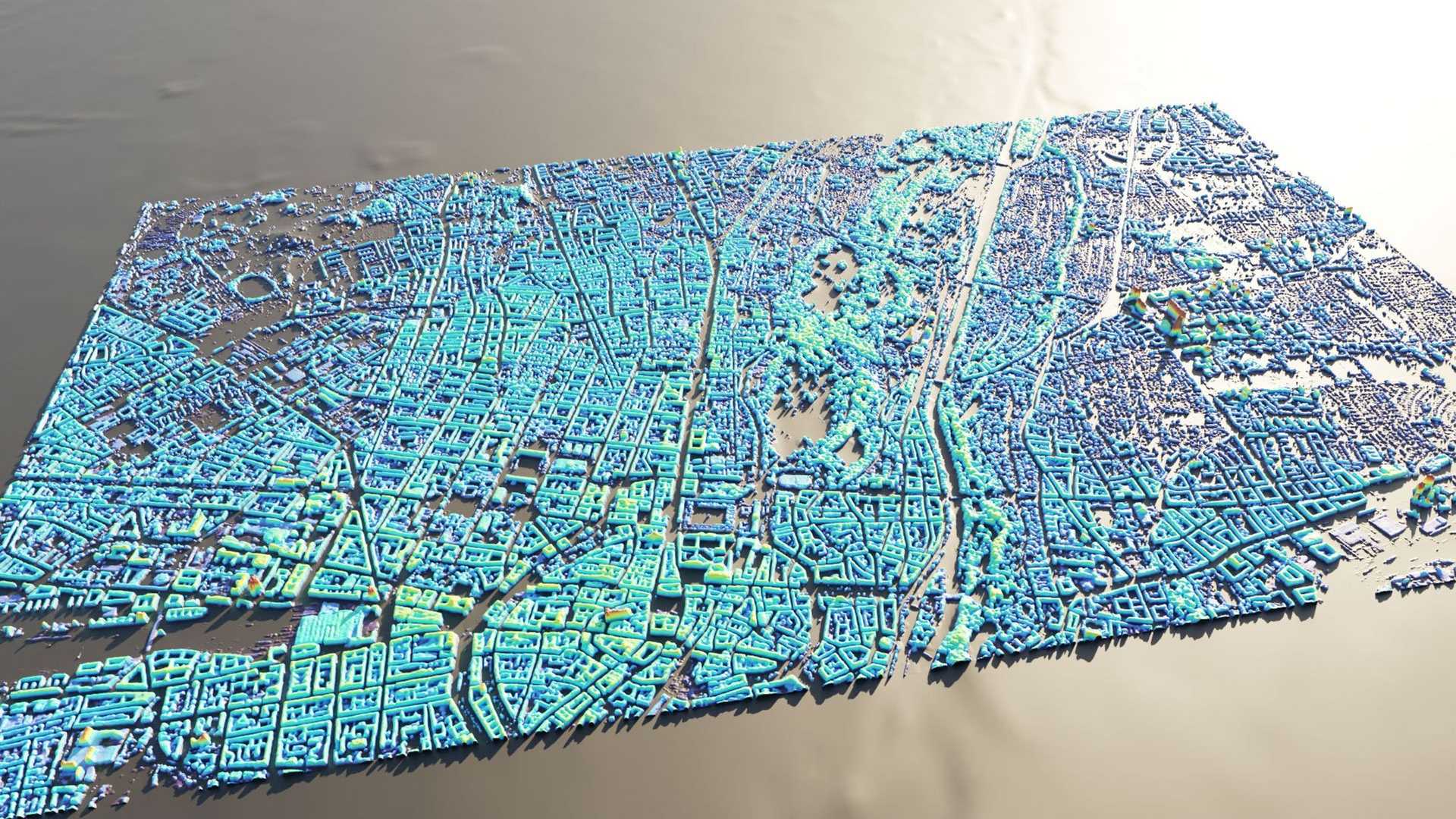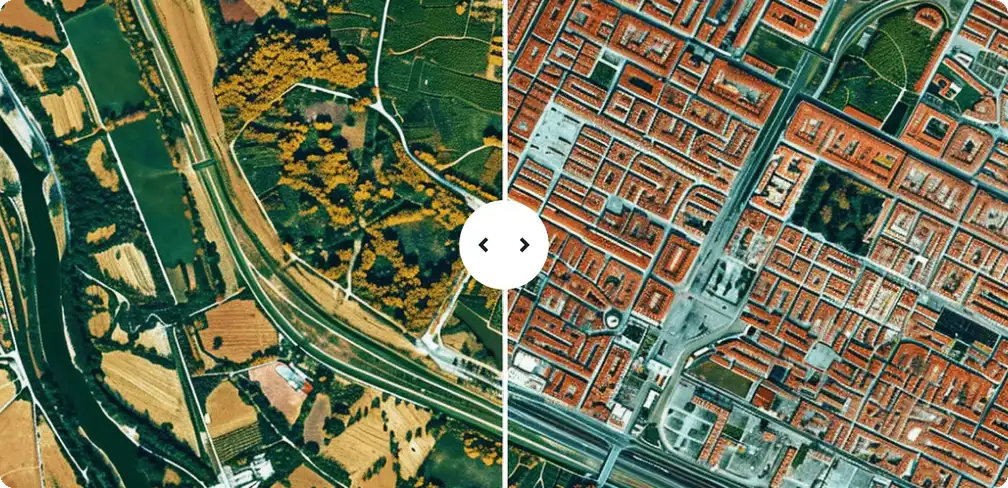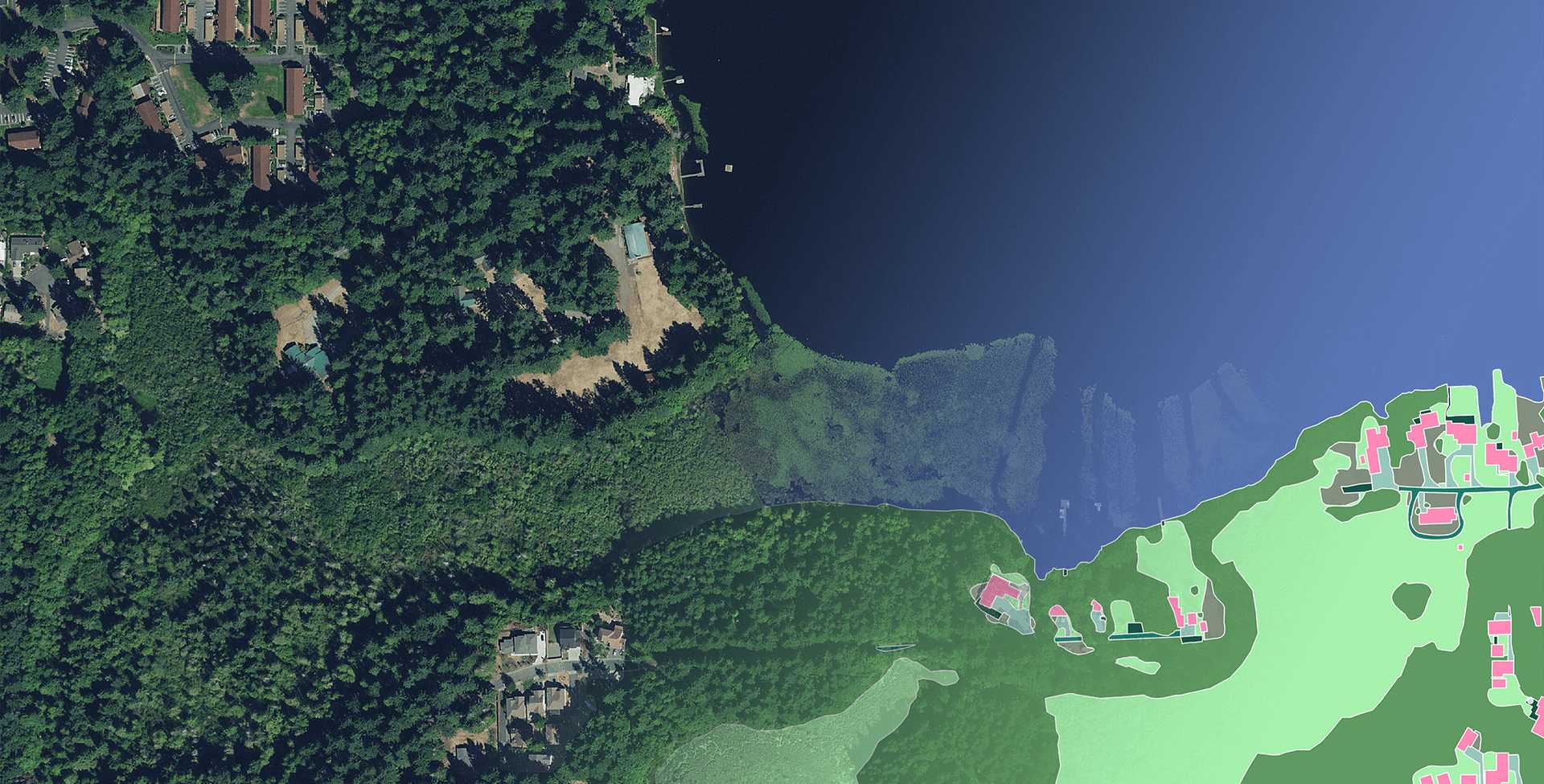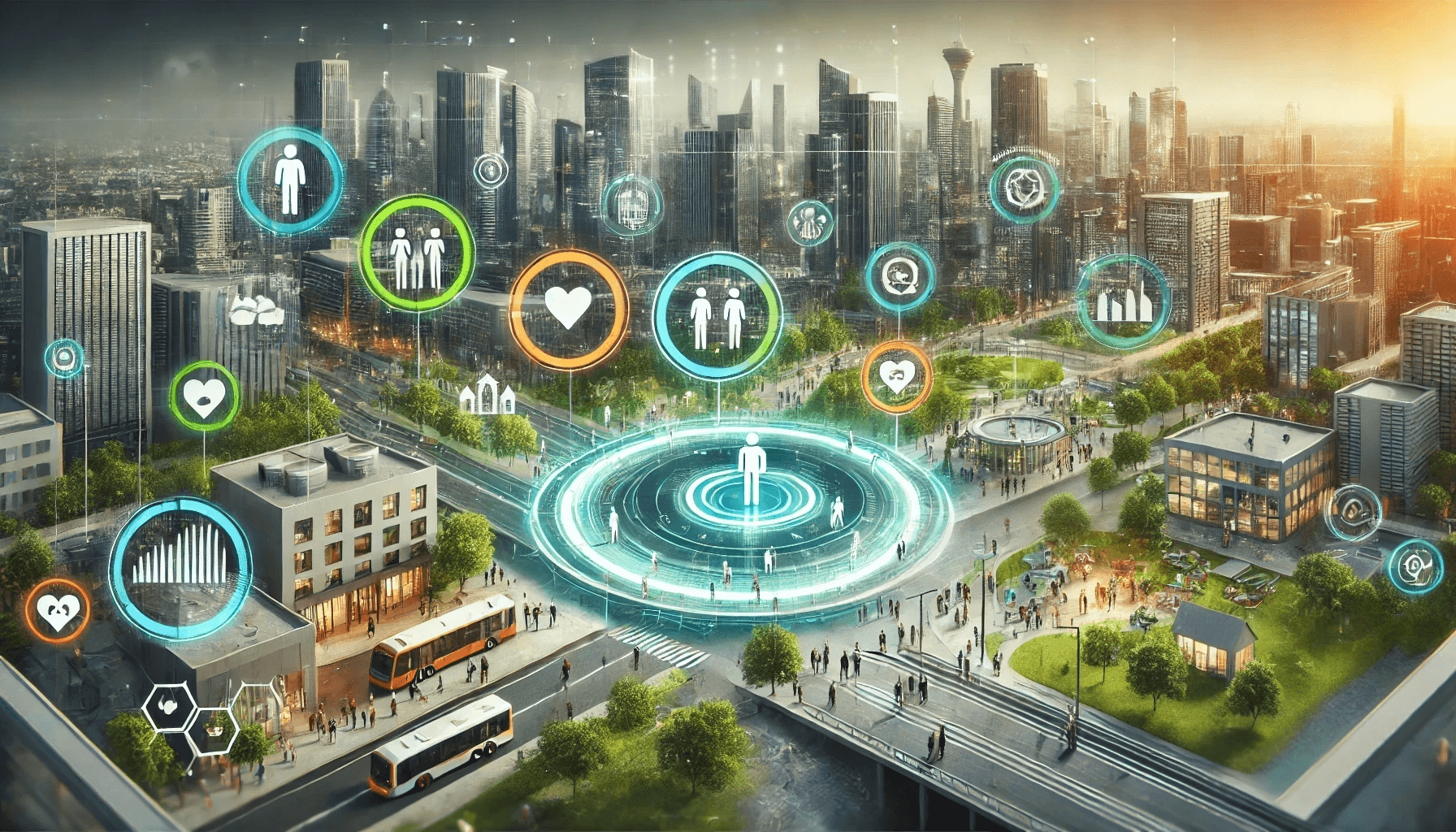
Digital twins for all
From monitoring to participatory planning.
How likely? How soon? What impact?
Digital twins are computational operating models of complex physical systems. From their origins in industry, where they've revolutionized the lifecycle of complex machines and plants, digital twins are being built at the city scale. By streaming data collected from embedded sensors, drones, and mobile devices to analytical visualizations and predictive models, they provide expansive views of vast, interconnected urban systems. Over 500 cities are expected to adopt digital twins by 2025, driven in large part by climate resilience needs.
Digital twin technology will advance rapidly, and offer enhanced abilities to understand climate hazards and plan risk reduction. The creation of detailed 3-d models of buildings and tree canopies will become faster and cheaper through breakthroughs in remote sensing technologies like Synthetic Aperture Radar (SAR) and computer vision approaches that can exploit it. More detailed models of urban microclimates and green infrastructure life cycles will allow planners to look far into the future, predicting a city's exposure and vulnerability to future hazards.
However, as urban digital twins evolve from simple monitoring tools to complex systems for resilience planning and citizen engagement, new challenges will highlight persistent gaps in creating truly human-centered digital twins - integrating diverse data, engaging users, and incorporating human behavior into models. The future of urban digital twins lies in balancing technological advancements with human-centric design and participatory planning approaches.
Personalized Insights
How might this trend shape your future? Generate a set of personalized insights to explore challenges, opportunities, and potential innovations. Simply select a sector, occupation, and target year — then press the button and let our AI do the work.
Generator Settings
Signals
Signals are evidence of possible futures found in the world today—technologies, products, services, and behaviors that we expect are already here but could become more widespread tomorrow.
